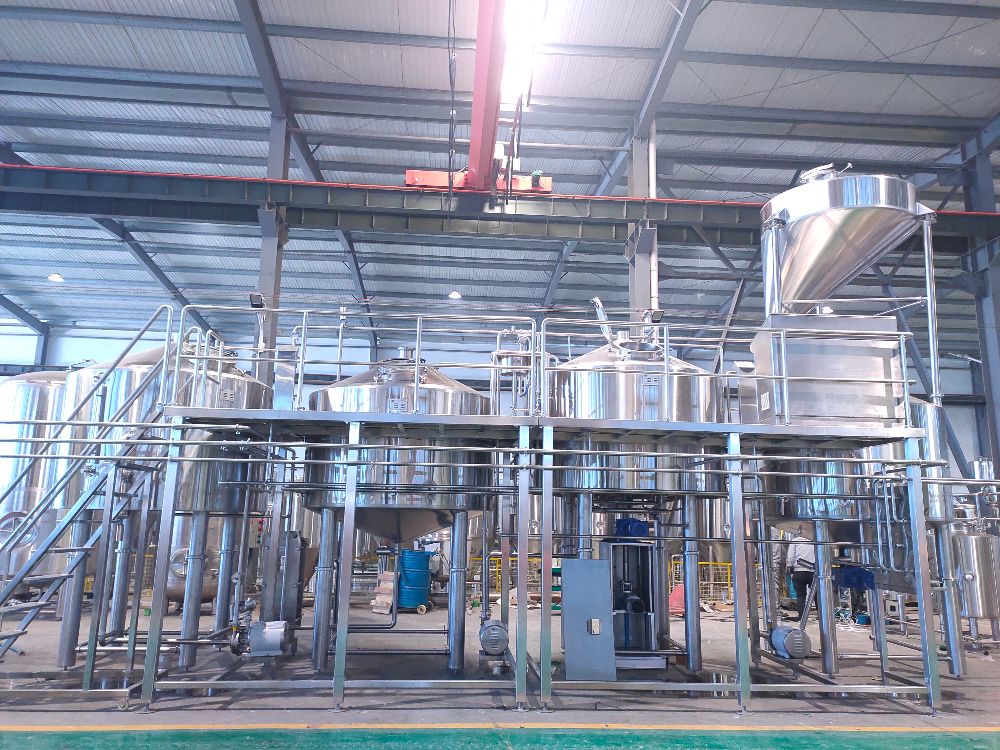How to Brew Your First Sour Beer
- Jan 06, 2022
- 102
- tiantai
A lot should be considered when you open your brewery like craft brewing tech, brewery equipment cost and price,find a location for brewery, license and regulation of a brewery. There is a lot of debate about whether sour beers are or will be the next big trend in craft beer. Like a lot of styles, sour beers were once very popular (by definition, they were the only beers produced at one time), but have waned in popularity over the years as more variety has become available. Lately, they have seen a resurgence in popularity as more and more beer drinkers discover the range of flavors available to them in today’s market.
Sour beers are a great way to expand your palate, as they offer a host of flavor you can’t reproduce with today’s typical brewing yeast. From the awful-sounding but strangely pleasant “horse blanket” of brettanomyces to the more appetizingly tart contributions of lactobacillus and pediococcus, the end result of a well-brewed sour beer is refreshing, complex, and unlike any other beer style.
Abandon all hope, ye who brew sour beers! Here’s my tips on how to brew a sour beer, along with a recipe to try.
Brewing Sour Beer
Sour Beer Ingredient Kits
Click Here to View All Sour Beer Kits, Books & Wild Yeasts
For a lot of homebrewers, sour beers represent a great unknown and a very scary risk. To listen to all of the hype regarding brewing sour beers, you would believe that brewing a rous beer would mean that every beer you brew after that would become sour by contamination.

The idea is that, by introducing wild yeast and bacteria into your brewing setup, you will then have to replace all of your brewing equipment or face the risk of every pale ale becoming a hopped up lambic.
The truth is that it is a risk, but it is not nearly as big a risk as some make it sound. Today, we’ll give you an easy, lower risk way to get into sour beers without investing a fortune in “back up equipment.” We’ll focus on minimizing risk and cost at the same time so you can brew your sour beer confidently and without having to rebuy your entire brewing system (which wouldn’t happen anyway).
Give It Time
Patience is a virtue, especially with wild yeast.
One thing you’ll need to know going into your first sour beer is that you’ll need to give it time. Lots of time. Plan on fermenting this beer in secondary for at least 6 months, and it will continue to develop in the bottle for years after that.
So, if you don’t want to wait, brewing this beer is not for you. We’ll be pitching a lambic blend of lacto, pedio, and brett, so you have to give those kids time to finish their flavors. We’ll also be using some US-05, but that’s only to kick start things and to preserve your primary fermenter from contamination.
Sour beers are a great way to expand your palate, as they offer a host of flavor you can’t reproduce with today’s typical brewing yeast. From the awful-sounding but strangely pleasant “horse blanket” of brettanomyces to the more appetizingly tart contributions of lactobacillus and pediococcus, the end result of a well-brewed sour beer is refreshing, complex, and unlike any other beer style.
Abandon all hope, ye who brew sour beers! Here’s my tips on how to brew a sour beer, along with a recipe to try.
Brewing Sour Beer
Sour Beer Ingredient Kits
Click Here to View All Sour Beer Kits, Books & Wild Yeasts
For a lot of homebrewers, sour beers represent a great unknown and a very scary risk. To listen to all of the hype regarding brewing sour beers, you would believe that brewing a rous beer would mean that every beer you brew after that would become sour by contamination.

The idea is that, by introducing wild yeast and bacteria into your brewing setup, you will then have to replace all of your brewing equipment or face the risk of every pale ale becoming a hopped up lambic.
The truth is that it is a risk, but it is not nearly as big a risk as some make it sound. Today, we’ll give you an easy, lower risk way to get into sour beers without investing a fortune in “back up equipment.” We’ll focus on minimizing risk and cost at the same time so you can brew your sour beer confidently and without having to rebuy your entire brewing system (which wouldn’t happen anyway).
Give It Time
Patience is a virtue, especially with wild yeast.
One thing you’ll need to know going into your first sour beer is that you’ll need to give it time. Lots of time. Plan on fermenting this beer in secondary for at least 6 months, and it will continue to develop in the bottle for years after that.
So, if you don’t want to wait, brewing this beer is not for you. We’ll be pitching a lambic blend of lacto, pedio, and brett, so you have to give those kids time to finish their flavors. We’ll also be using some US-05, but that’s only to kick start things and to preserve your primary fermenter from contamination.

.jpg)


